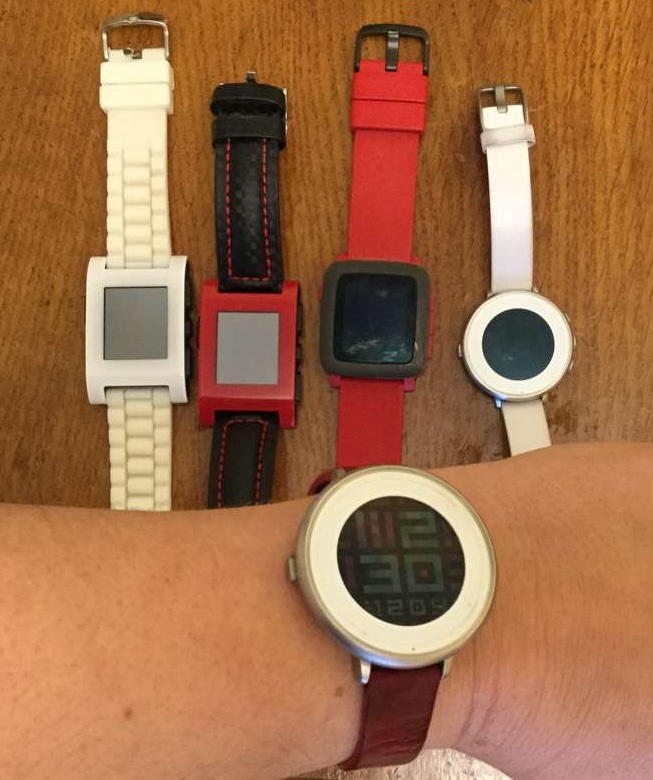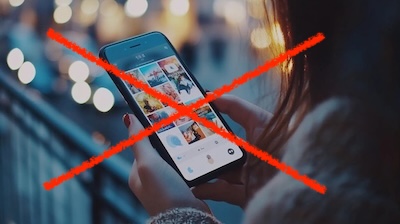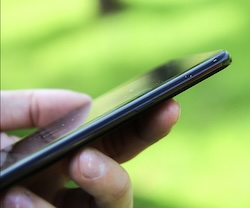Who's Watching Your Watch?

Table of Contents
Whence the Smart Watch?
In 2012 the Pebble smartwatch hit Kickstarter, and the funding site exploded. While there had been a few watches before that had promised to be, well, at least a little more clever than the typical digitial watch. The Pebble claimed to connect to your smartphone -- itself only a few years old at this point -- to display notifications and input data all from your wrist.
Fast forward several years and those original Pebble watches have largely been replaced on most peoples' wrists. A whole new crop of smartwatches popped up, powered by the likes of hardware powerhouses like Sony, Samsung, and Motorola. Within a few short years the Apple Watch was released, in early 2015. Shortly after this, Pebble went bust, sold first to Fitbit and then on to Google. The world had moved on.
Where does it keep its data?
Most people think the key problem to solve with smartwatches is battery life, followed by the attractiveness of the design. Maybe a few other features matter to you, like whether or not it has a heart rate monitor or a barometer, if it's waterproof, or if you can dictate messages into it. All of these features are nifty enough. But they aren't my biggest issue.
My biggest issue is data sovereignty. Where, after all, do these smartwatches keep their brains? Where do they store their data?
The truth is, something the size of a watch only has minimal processing power. It's not thinking up answers to your Siri queries all by itself. Its brain is off the device, requiring a data plan to talk to someone else's servers through someone else's network.
It's also not storing all that data by itself, on the box! Mostly the data is transfered via bluetooth or some other protocol to your smartphone itself. And that phone is typically plugged into the cloud -- which is, as I've already described, merely someone else's computer.
Your heartrate, body temperature and step counts, as well as your emails and text messages, and myriad other elements all flow through that device daily.
If you thought your phone was the most intimate of your devices, your wristwatch even knows when you are working out, ovulating, having sex or experiencing a hot flash. And typically it's transmitting all that data to someone else's computer.
There are very few smartwatches that don't fall into this pattern. So let me tell you about my favorite one that does not: the Pebble.
Pebble Still Rules
Because Pebble was made before the personal data economy really took off, it doesn't know that it should keep your data or use it for anyone else's gain. The Operating System has data sovereignty written into it from the get-go-- this is a win!
Second, while the company was shuttered in 2016, a small group of volunteers online kept it alive. Calling themselves “the Rebble Alliance,” they hacked the watch, rescripted the firmware, and got it up and running again on Android and on iOS for years.
Fun fact: I still use an original Pebble smartwatch, and have done so for over a decade. When my earliest watches finally ran down and even wouldn't last the day anymore, I found replacements on eBay or used iFixit instructions to repair the battery.
Running a Pebble is straightforward on an Android or an iPhone. You need to follow the instructions from the Rebble Alliance to get it set up. You can then easily run it using Gadgetbridge on Android. Note that the iOS app disappeared from the Apple Store in 2021 but the Rebble crew have developed a workaround.
Running Pebble from my beloved Linux phone -- Sailfish, made by former Nokia employees -- required a little more creativity and community. I had to set it up using a dummy Android at home before handing it over to RockPool, a Sailfish app written and maintained by a member of the Sailfish community, abranson.
Most importantly (to me at least), my data stays exactly where I put it.
Back from the Dead?
But the best news is this -- the Pebble Smartwatch is making a comeback! And now it's better than ever.
A few weeks ago its founder announced he is making them again, drawing on his own personal funds to get it started. At the same time, Google handed the operating system over to the public domain, making it open source and available to all.
You can now pre-order your own, brand new Pebble, now called "Core 2", planned to ship in 2025. The new versions are sleek and updated, using e-ink in color or black and white. They feature many of the bells and whistles we'd expect from today's smart watches, without the data-sucking features that would give us pause. Plus battery life is up to a month on a single charge.
That said, while the list of functionalities is fairly similar to the old Pebble watches, it's unclear if this is a vanity project from its former founder, which would make its long term viability problematic. He also hasn't been explicit about this approach to privacy, beyond assurance that the operating system is open source.
Either way, it's exciting to see something user friendly, community-driven, and with a long history come back to life.
What are my other options?
Lest this appear to be a self-funded ad for Pebble (I really do love mine, if you couldn't tell) here are a few other examples of watches that keep your data where you put it:
- Bangle.js is an open source smart watch that is fairly usable out of the box and customizable as well.
- You can get a number of smartwatches and hack them to put AsteroidOS on instead. They maintain a list of compatible watches online here.
- The Pine Time is built by a community dedicated to open source software and hardware. It hobbyest makers want full control over the entire watch, electronics and all, and they want to know exactly where their data is. Pine products are best for power users as opposed to those who are used to walled garden technologies that "just work" out of the box.
- The Withings Hybrid Watch is European made and has the dual advantages of both the classic analog watchface and digital components with 'smart' capabilities.
- An actual, old fashioned, unsmart watch. They come in digital. They come in analog. And many of them don't connect to a single thing. This is your best bet for keeping your data on your wrist!



